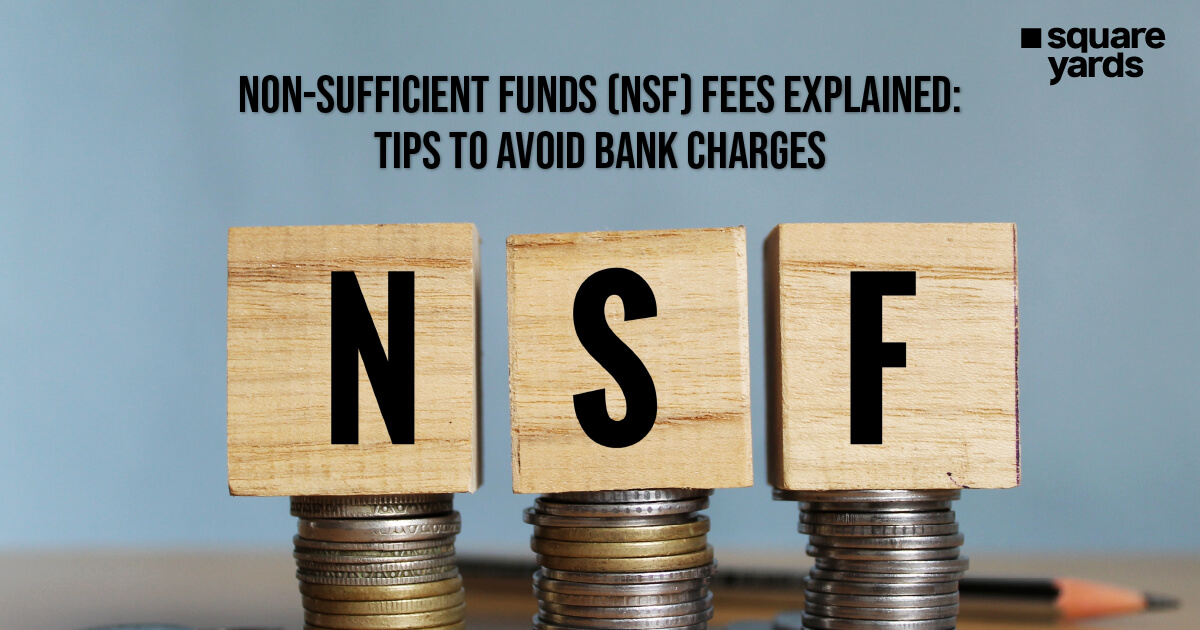Before investing in real estate, we usually look for all the distinct rules, benefits and drawbacks. Single-family properties often provide simpler management and appeal to long-term tenants, offering stable returns. Conversely, multifamily properties can generate higher rental income and benefit from economies of scale, though they may require more intensive management and higher initial investment. In this blog, we are going to understand Multifamily vs Single Family Real Estate Investing, covering pros and cons, types of properties and financing.
Residential Real Estate: Overview
To understand multifamily vs single family real estate, we must first understand what residential real estate is. Residential real estate is a property made for residential purposes where we can live with our family or, we can say, a place we can call home. These kinds of properties include single-family homes, apartments, townhouses and other types of housing. Every one of us aims to own a house, but one question arises: what type of house will be suitable for us? For this, you must know about the key aspects of residential real estate. The key aspects of residential real estate include:
-
- Single-Family Homes: These types of homes are detached houses meant for one family. Single-family investment provides more privacy than other types of housing. These homes are occupied by one household, which can include a single person, a couple or a family.
- Multi-Family Homes: Buildings that house multiple families, such as duplexes, triplexes, and apartment buildings, are called Multi-Family Homes. Multifamily investments can range from small buildings with a few units to large apartment complexes with many units. These types of homes or buildings are occupied by more than one occupant.
- Condominiums (Condos): These are individually owned units within a larger building or complex. Owners share common areas like pools, gyms, and gardens. However, they are responsible for the maintenance of their own units, and the association of condominiums handles the maintenance of common areas.
- Townhouses: Multi-story homes that share one or more walls with adjacent properties but have their own entrances are called townhouses. They often have small plots of land but have ownership of that particular area.
- Cooperative Housing (Co-ops): Residents in a housing cooperative own shares in a corporation that owns the building, granting them the right to live in a specific unit. More shares result in a higher ownership stake in the property.
Introduction to Multifamily Real Estate
Multifamily real estate are the type of properties that contain multiple separate housing units within one building or several buildings within a complex. These properties are designed to accommodate more than one family. They can vary in size and scale, from small duplexes to large apartment buildings and complexes.
One of the major advantages of multifamily real estate is income generation. Owners can generate rental income from multiple units, making it a profitable investment. Another advantage is economies of scale; maintenance and management costs per unit can be lower compared to single-family properties. Here are the types of properties Multi Family Real Estate includes:
-
- Duplexes, Triplexes, and Fourplexes: These are small multifamily properties with two, three, or four separate units. They are often used for both personal residence and rental income and have their own entrances, kitchen and living areas.
- Apartment Buildings: These are Larger buildings with multiple units, typically ranging from a few units to hundreds of units. These buildings often offer shared amenities like laundry rooms, gyms, pools, and common areas.
- Condominium Complexes: While similar to apartment buildings, condominiums involve individual ownership of each unit. Residents own their specific units and share ownership of common areas.
- Townhouse Complexes: These are rows of multi-story units that share walls but have separate entrances and may include small private yards or garages.
- Mixed-Use Buildings: These properties combine residential units with commercial spaces, such as retail stores or offices, within the same building or complex.
Factors to Consider While Investing in Residential Real Estate vs. Multifamily Real Estate

There are several factors that can help determine whether to choose residential real estate or multifamily real estate. Some of these factors are mentioned below:
Affordability of the Market
Single-family homes may be too expensive in some high-cost areas to generate positive cash flow from rentals. For example, median home prices in cities like Los Angeles and Boston exceed $900,000, making it difficult to find renters who can afford the necessary rent. Multifamily properties can be more affordable and attractive to renters in these markets.
Cost Per Unit
A useful metric for evaluating investments is the cost per unit. For single-family investments, this is simply the purchase price. For multifamily properties, the purchase price is divided by the number of units. Lower cost per unit generally means a better investment. For instance, buying a 10-unit building for $2 million results in a cost per unit of $200,000.
Market Demographics
Consider the local market demographics. In areas dominated by renters, like big cities and college towns, multifamily properties might be better investments. Additionally, the type of renters (e.g., young professionals and families) can influence the decision. Multifamily properties with larger units can appeal to families, while single-family investments might be more attractive in areas with a higher percentage of homeowners.
Scale
Scaling a portfolio of single-family homes can be challenging due to the individual management of each property. Multifamily properties allow investors to manage multiple units within a single property, providing economies of scale. This is especially important during economic downturns, as having multiple units can help mitigate the risk of non-payment and inflation impacts. Multifamily properties also offer more opportunities to adjust rents over time compared to single-family homes, which typically have longer lease terms.
Single-Family vs Multi-Family Rentals Key Differences

Here is the comparison of single-family real estate and multi-family real estate rentals:
|
Factor |
Residential / SFR |
Multifamily |
|
Lease renewal frequency |
12-36 months |
6-12 months |
|
Cost per Unit |
High |
Low |
|
Lease renewal rate |
High |
Moderate |
|
Capital appreciation potential |
Moderate |
Moderate to High |
|
Cost to finance |
Low |
Moderate to High |
|
Ease to achieve scale |
Difficult |
Easy |
|
Ease of property management |
Difficult |
Easy |
|
Pool of prospective buyers |
Moderate to High |
Low to Moderate |
Advantages of Single-Family Real Estate Investing
Advantages of single-family real estate investing include the potential for higher appreciation rates and greater ease of financing. These properties attract long-term tenants, which ensures stable rental income. Additionally, they typically require less management compared to multi-family units. Some of the major advantages of Single-Family Investment are:
Lower Initial Investment
Single-family investments generally require a lower initial capital outlay compared to multifamily properties. This makes them more accessible to individual investors and those with limited funds. The affordability of single-family homes also means more financing options are available, including government-backed loans with favourable terms.
Easier Management
Managing single-family properties is often simpler than handling multifamily buildings. With fewer tenants to deal with, the day-to-day management is less complex. Many single-family property investors can manage their properties themselves, avoiding the need for professional property management services.
High Liquidity
Single-family homes typically have a larger pool of potential buyers compared to multifamily properties. This high demand makes it easier to sell single-family homes quickly if the need arises, providing better liquidity and flexibility for investors.
Tenant Stability
Tenants in single-family homes often stay longer compared to those in multifamily units. This reduces tenant turnover and vacancy rates, leading to more stable and predictable rental income. Long-term tenants also tend to take better care of the property, minimising maintenance costs.
Simple Investment Strategy
Investing in single-family homes is a straightforward strategy, ideal for new investors. The simplicity of dealing with one tenant per property and clear market data from platforms like Zillow and Redfin makes it easier to evaluate and manage these investments.
Advantages of Multifamily Real Estate Investing
Advantages of multifamily real estate investing include the ability to generate higher rental income from multiple units within a single property. This type of investment offers better economies of scale, reducing per-unit management and maintenance costs. Additionally, vacancies in one unit have less impact on overall cash flow compared to single-family properties. Let’s understand these advantages in detailed format:
Higher Income Potential
Multifamily properties generate rental income from multiple units, significantly increasing potential cash flow. This diversified income stream provides a buffer against vacancies, as other units continue to generate revenue even if one is unoccupied.
Economies of Scale
Owning multiple units in a single property allows for shared expenses, such as maintenance, utilities, and property management. This can result in lower costs per unit compared to managing several single-family homes. Bulk purchasing of supplies and services can also reduce overall expenses.
Scalability
Multifamily investments enable quicker portfolio growth as investors can acquire multiple units in a single transaction. This simplifies the process of expanding a real estate portfolio and allows for easier management compared to owning many single-family properties spread across different locations.
Recession Resilience
Multifamily properties tend to be more resilient during economic downturns. The demand for rental housing remains relatively stable, as people always need a place to live. This stability helps mitigate risks associated with economic fluctuations.
Lower Cost Per Unit
Multifamily properties often trade at a lower price per unit compared to single-family homes. This makes them more cost-effective, particularly in markets with high property prices. The ability to spread fixed costs across multiple units further enhances cost efficiency.
Financing of Residential and Multifamily in Real Estate
Financing residential and multifamily real estate requires different strategies and considerations. For residential properties, investors can choose from conventional loans and government-backed loans like FHA, VA, and USDA loans. These loans typically require lower down payments and are more accessible to individual investors. Conventional loans often need a down payment of around 20%, while FHA loans may require as little as 3.5%. Interest rates for residential mortgages are usually lower and can be either fixed or adjustable, with terms ranging from 15 to 30 years. A good credit score is essential, with most conventional loans requiring a score of at least 620.
In contrast, multifamily real estate financing, which applies to properties with five or more units, often involves commercial loans and government-sponsored loans. These loans require higher down payments, typically between 20% and 30%, and have higher interest rates due to the perceived risk. Multifamily loans also consider the property’s potential rental income, occupancy rates, and market conditions. Lenders for these properties often seek borrowers with strong credit histories, low debt-to-income ratios, and experience in property management. This financing method allows for economies of scale, making it easier to manage multiple rental units and potentially offering higher returns.
Conclusion
When choosing between residential and multifamily real estate investments, one should consider factors like market affordability, cost per unit, market demographics, and scalability. Single-family homes generally require lower initial investment and simpler management, making them accessible for new investors. They offer high liquidity and stable tenants but lower rental income and higher vacancy risks. Multifamily properties, on the other hand, provide higher income potential, economies of scale, and better resilience during economic downturns. They require higher initial investment and more complex management but allow for quicker portfolio growth and diversified income streams, making them attractive for seasoned investors.
You May Also Read :
|
Guide To ESG investing in Canada |
|
|
Know The Forex Trading in Canada |
|
|
Explore Green Investment in Canada |
|
|
Factors of IRS Audit Triggers |
Frequently Asked Questions (FAQs)
What is the 1% rule in multifamily investing?
The 1% rule in multifamily investing is a guideline suggesting that the gross monthly rent of an investment property should be at least 1% of its purchase price. For example, if a property costs $200,000, it should generate at least $2,000 in monthly rent. This rule helps investors quickly assess the potential profitability of a property by ensuring that the rental income covers the mortgage payments and other expenses.
What are some family investments?
Ans: Family investments typically include a variety of financial instruments aimed at securing the financial future of the family. These can include savings accounts, mutual funds, bonds, stocks, real estate, and education savings plans. Such investments are designed to build wealth over time, provide for children’s education, and ensure financial stability for the family.
Why investing in single-family homes might be a good idea?
Investing in single-family homes might be a good idea because they generally require a lower initial capital outlay and are easier to manage compared to multifamily properties. They tend to attract long-term tenants, which leads to lower vacancy rates and more consistent rental income. Additionally, single-family homes have a higher demand in the real estate market, making them easier to sell when needed.
What are the pros of investing in single-family homes?
The pros of investing in single-family homes include lower purchase costs and simpler management due to dealing with fewer tenants. They also offer high liquidity as there is a larger pool of potential buyers, making these properties easier to sell. Additionally, tenant stability is often higher in single-family homes, leading to reduced turnover and vacancy rates and providing a more predictable rental income.
What are the cons of investing in single-family homes?
The cons of investing in single-family homes include lower rental income compared to multifamily properties, as they generate income from only one tenant. There is also a higher vacancy risk, as the owner must cover all expenses when the property is unoccupied. Moreover, all maintenance and repair costs fall on the owner, which can be significant. Managing multiple single-family homes can also be challenging and less efficient than managing a single multifamily property.











